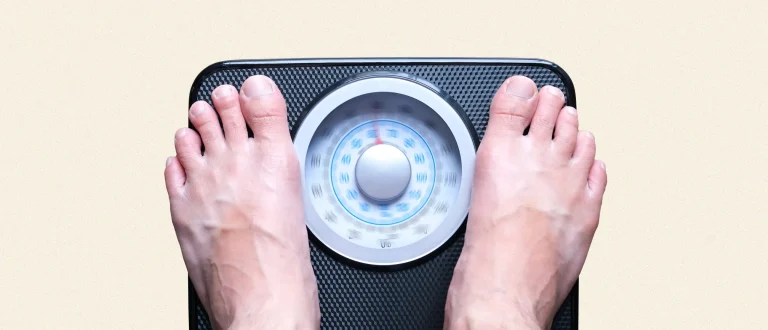30-Second Takeaway
- Testosterone levels have been dropping among American men in the past few decades.
- Environmental and behavioral factors can cause low T, but researchers now suspect some cases of low testosterone could have genetic roots as well.
- DNA aside, testosterone replacement therapy can raise testosterone levels and ease symptoms of low T.
In recent years, researchers and media outlets have been sounding the alarm about declining testosterone levels in men. This generational decline is likely linked to factors like an aging population and an increase in illnesses like diabetes. But some researchers also believe that low testosterone could be in your DNA, passed down from your old man along with his eye color and bad golf swing. So, is low testosterone genetic?
A prominent 2007 study (1) on a large sample of American men found that the average testosterone level has been dropping by as much as 1 percent per year. Testosterone levels lower naturally with age, but this study found that a 65-year-old man in 1987 had about 17 percent more testosterone than a 65- year-old man in 2004.
More recent research from the American Urological Association found that between 1996 and 2016 (2), testosterone levels declined in adolescents and young men. The study authors noted that between 10-40 percent of adult males and 20 percent of young adult men were testosterone deficient. And if testosterone levels get too low, it can cause a slew of symptoms.
Wondering if low T is in your family tree? Here’s what you should know about the potential link between genetics and low testosterone.
What is Testosterone?
Testosterone is the primary male hormone produced mainly from the testes. The hormone drastically increases as you enter puberty and peaks by early adulthood. It’s responsible for a multitude of major bodily functions, including:
- Building muscle mass and strength
- Generating and maintaining a healthy level of red blood cells
- Maintaining healthy bone density
- Regulating mood
- Producing sperm
- Distributing fat
What Is Low Testosterone?
Men’s testosterone levels naturally decline with age, starting around age 35. The decline is slow: men over 30 lose between 1 to 1.5 percent of their natural supply of testosterone each year.
But for some guys, the drop is more precipitous. Clinically low testosterone is anything below a level of 300 ng/dL—the universal number for what is considered low by The American Urology Association. Almost 40 percent of men 45 and older have low T, says Nick Dahl, D.O., a family medicine physician who treats men with low T.
Symptoms of Low Testosterone
If your testosterone levels are unnaturally low you might feel downright awful. You might notice physical and emotional changes that can radically change your day-to-day life. Having a testosterone deficiency can lead to symptoms like:
- Unexplained fatigue
- Low sex drive
- Erectile dysfunction
- Unexplained weight gain
- Increased body fat
- Decreased muscle mass
- Muscle weakness
- Difficulty concentrating
- Less beard and body hair growth
- Depression
- Anxiety
- Irritability
There’s also a wide association between low testosterone levels and disease. One 2018 study found that people with a T level lower than 300 ng/dL were at greater risk for obesity, cardiovascular disease, hypertension, diabetes, and other diseases. It’s worth noting that this data doesn’t prove that low T causes these negative outcomes, just that a link exists.
Why Are More Men Testosterone Deficient?
A myriad of factors can cause low testosterone. The biggest culprits include obesity, lack of sleep, hypothyroidism, diabetes (which can carry a genetic link), alcohol abuse, and poor nutrition. And we’ve seen changes in many of those factors in the past few decades.
Take obesity. Between 1999 and 2016, obesity in American adults increased by nearly 10 percent. Obesity and testosterone create something of a vicious cycle, says Dahl. Men who are obese tend to have lower testosterone levels, and men with low T tend to put on weight. Fat cells metabolize testosterone and convert it into estrogen. In addition, obese people have lower levels of SHBG (sex hormone binding globulin), which transports testosterone through the blood.
Research also shows that people born in recent years tend to drink more than older generations. Men today are also more likely to develop diabetes: In 2015, 23.4 million people had diagnosed diabetes, compared to only 1.6 million in 1958.
But new research also shows a possible genetic cause for low T.
Is Low Testosterone Genetic?
A 2011 study (3) that examined genomes found that gene mutations within SHBG were associated with low testosterone levels in the blood.
SHBG binds to testosterone and carries it through your bloodstream, where it controls the amount of testosterone that your body tissues can use. SHBG inhibits the function of testosterone and influences bioavailability.
Not all testosterone bound with SHBG is available to cells and tissues in your body. Free testosterone, which accounts for about 1-2 percent of the total testosterone in your body and is used for processes like cell replication in the bones and muscles and creating facial hair, is not bound to SHBG.
When your body doesn’t have enough free testosterone in the blood available to use, low testosterone symptoms can develop.
In the 2011 study, researchers looked at the SHBG genes of 14,000 men. What they found: men who had three or more variations (or “risk-markers” as they referred to them) in the SHBG gene were 6.5 times more likely to have a decrease in the amount of total testosterone in the blood than men who didn’t have the risk markers. A 2021 study of genes and low testosterone saw similar associations between changes in the SHBG gene and hypogonadism.
Other Possible Genetic Factors For Low T
In addition to SGHB markers, other genetic conditions have also been linked to low testosterone. Among them:
Klinefelter Syndrome
- Klinefelter syndrome is a genetic condition affecting boys and men that occurs as a result of the presence of one or more extra X chromosomes.
- The condition isn’t often diagnosed until adulthood.
- Klinefelter syndrome can cause the testes to be smaller than normal, which can lead to lower production of testosterone.
- There’s no cure for Klinefelter syndrome, but testosterone replacement therapy (TRT) is often used to treat symptoms like
Kallman Syndrome
- This rare condition is the result of a lack of production of certain hormones that regulate sexual development.
- Kallman Syndrome is a form of hypogonadotropic hypogonadism and is characterized by delayed or absent puberty and an impaired sense of smell.
- Men born with this condition often have an unusually small penis, undescended testicles, low testosterone, and are often infertile.
- Treatment for Kallman Syndrome involves hormone replacement therapy aimed at inducing puberty and maintaining normal hormonal levels.
Prader-Willi Syndrome
- Prader-Willi syndrome is caused by a defect on chromosome 15 which disrupts the hypothalamus—the part of the brain that controls the release of hormones like testosterone.
- Symptoms include problems with hunger, growth, sexual development (micropenis and/or undescended testicles), body temperature, mood, and sleep.
- There are a few treatments for Pader-Willi Syndrome, but testosterone replacement therapy can be used to replenish low levels of sex hormones.
Environment Might Also Play a Role
Recent research suggests that your childhood environment can also play a role in low testosterone levels. According to a 2018 study (4) from Durham University, challenging childhood conditions—like exposure to infectious disease and greater levels of poverty—were linked to lower testosterone levels, suggesting that stress-related factors experienced during childhood can impact T levels as an adult.
For example, sleep deprivation is often related to low T, and Dahl thinks that, based on this research, it could be possible that getting less sleep while growing up in a stress-filled environment could affect your testosterone levels later in life. Again, this is still being researched, but the door is certainly open for connecting childhood circumstances as the possible cause of conditions later in life like low testosterone.
Can You Tell if Low Testosterone is In Your Genes?
If you have any of the above symptoms and suspect low T, a blood test like the one offered by Hone can determine if your hormone levels are low. But it can’t tell you if your levels are impacted by your DNA.
Physicians can order a karyotype; a test that looks for possible SHBG mutations, but this is typically only done if you didn’t develop normally during puberty. And regardless of whether or not there is a genetic link for low T, the treatment options would be the same.
Treatment for Low T
Whether you have the SHBG risk markers or not, your low testosterone treatment will be the same. If you developed normally during puberty, your physician will likely prescribe testosterone replacement therapy, or clomiphene citrate (Clomid), a drug that treats the symptoms of low T. If your body stopped developing at age 12 or your testicles didn’t get big like a normal adult, you’ll likely get testosterone replacement therapy (TRT).(4)
The Bottom Line
Environmental and behavioral factors can cause low T, but researchers now suspect genetics may also play a role. Testosterone replacement therapy can raise testosterone levels and ease symptoms of low T.
- A Population-Level Decline in Serum Testosterone Levels in American Men
- Trends in Serum Testosteron Levels Among Adolescent and Young Adults Men in the United State
- Genetic determinants of serum testosterone concentrations in men.
- Childhood ecology influences salivary testosterone, pubertal age and stature of Bangladeshi UK migrant men.








